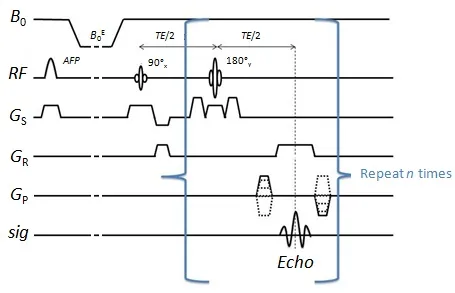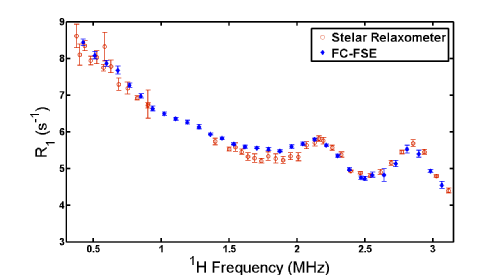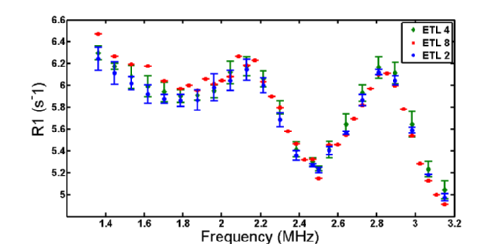Field-Cycling Fast Spin-Echo
Thanks to its conceptual simplicity and relatively low hardware demands the fast spin-echo sequence is well suited for adaptation to FFC-MRI. This adaptation, known as Field-Cycling Fast Spin-Echo (FC-FSE) is the first rapid imaging technique I have implemented for use with our FFC-MRI whole body scanner.
The imaging sequence itself is detailed on the RARE page. Because image collection is by far the most time consuming aspect of FFC-MRI, by incorporating the FSE sequence into a field-cycling experiment significant speed up gains can be achieved over conventional image acquisition.

Currently speed up factors of 2, 4, and 8 have been implemented on our system. This is due to gradient limitations which sets a minimum interecho spacing of about 30 ms. Because of this in most samples virtually no signal will be detected beyond 8 echoes.
For each evolution field of interest T1 is calculated using a two-point method, where the signal is measured with and without an inversion pulse. Normally this would necessitate long scan times, even using FC-FSE, as we would need to collect 2 images for every evolution field. This requirement can be overcome by using Curie's Law, which allows us to estimate the saturation recovery signal for each evolution field using a single reference image.
Experiments performed using this sequence have shown good agreement with results obtained using our Stelar relaxometer, which performs FFC-NMR relaxometry on small samples.


Also see the rapid FFC-MRI page of our group website for more information.